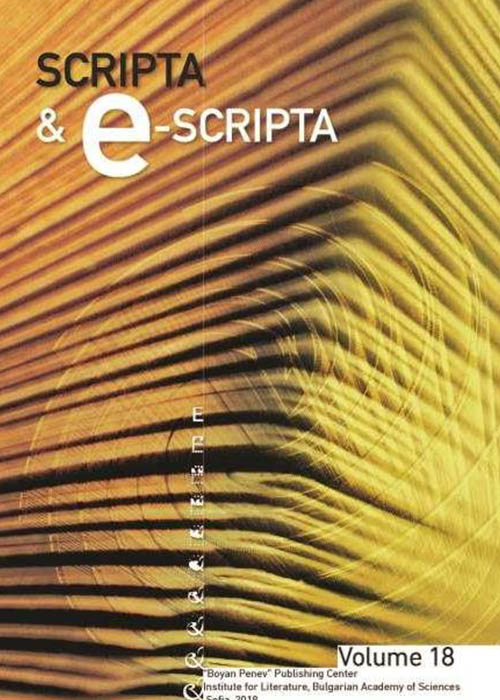Proposal for a unified encoding of Early Cyrillic glyphs in the Unicode Private Use Area

- Author(s): Ralf Cleminson Victor Baranov Achim Rabus David Birnbaum Heinz Miklas
- Subject(s): Language and Literature Studies // Early Cyrillic glyphs // Unicode 5.1 // Private Use Area //
-
Published by: Institute for Literature BAS

- Print ISSN: 1312-238X
- Summary/Abstract:
The paper proposes an encoding standard for early Cyrillic characters and glyphs that are still missing in the Universal Character Set (UCS) of the Unicode Standard and for different reasons will probably never be included, but are nevertheless used by the paleoslavistic community. This micro-standard is meant to expand, not to replace the Unicode standard and follows the path chosen by the Medieval Unicode Font Initiative (MUFI) a few years ago for the Latin script (see http://www.hit.uib.no/mufi/). Starting from the inventory of Old Cyrillic originally proposed at the conference held in Belgrade on 15–17 October 2007 (see BP), and taking in view the recommendations given by Birnbaum et al. 2008 and the MUFI-consortium, the chosen set is limited to 178 units with a specific function (characters and composites, superscript characters, modifier characters, and punctuation marks), which are located in the Private Use Area (PUA). Their positions (code points) are coordinated with MUFI. This set we will call PUA1. In the future a second set PUA2 will be proposed for a number of ligatures and paleographic variants that may not be coordinated with MUFI and are intended for special publications addressed to Slavistic readers. It is hoped that the proposed PUA encoding for Early Cyrillic Symbols, for which we choose the abbreviation CYFI, will establish itself as a sort of micro-standardization. Designers of scholarly fonts are encouraged to include these symbols according to this proposal (see code points in the appendix).
Journal: Scripta & e-Scripta vol. 8-9, 2010
-
Page Range: 9-26
No. of Pages: 18
Language: English - LINK CEEOL: https://www.ceeol.com/search/article-detail?id=213502
-
Ralf CleminsonFaculty Associate, Prof., PhD University of Oxford, United KingdomVictor BaranovRussiaBaranov, Victor, Prof., DSc. Kalazhnikov Izhevsk State Technical University, RussiaDescription
Victor A. Baranov, Kalashnikov Izhevsk State Technical University, Doctor of Philological Sciences, Professor. Field of specialization: The history of Russian language, dialectology, phonetics of the modern Russian language, computer linguistics, full- text databases, publication of ancient Slavonic manuscripts, corpus linguistics, linguistic statistics, head of the project The historical corpus “Manuscript” (manuscripts.ru).
Achim RabusGermanyDepartment of Slavic Linguistics, University of Freiburg, GermanyDescriptionProf. Dr. Achim Rabus is the current Head of the Department of Slavonic Studies at the University of Freiburg, Germany. Rabus defended his PhD thesis on the language of East Slavic spiritual songs in 2008 and his Habilitationsschrift on Slavic language contact in 2014. Since 2009, Rabus has been a member of the Special Commission on the Computer- Supported Processing of Mediæval Slavonic Manuscripts and Early Printed Books to the International Committee of Slavists, and since 2018, the President of the Commission. His current research focuses on Slavic social dialectology, Handwritten Text Recognition, corpus and (digital) historical linguistics.
David BirnbaumProf., PhD University of Pittsburgh, United StatesHeinz MiklasProf., PhD Vienna University, Austria; Foreign member of Bulgarian academy of Sciences -
SUBJECT: Language and Literature Studies // Early Cyrillic glyphs // Unicode 5.1 // Private Use Area //KEYWORDS:
-